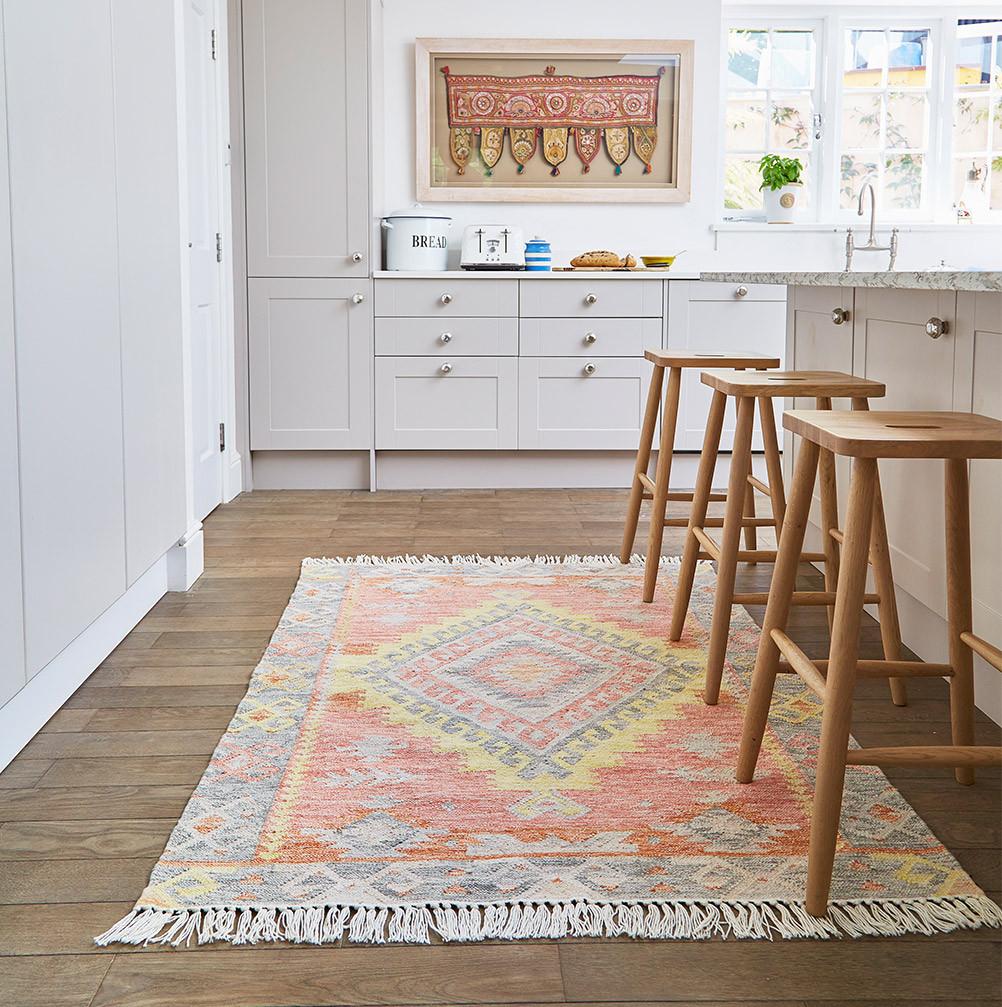
In 2021, doing our bit for the environment is more important than ever. As an interior designer, I find more and more of my clients want to use ethical and sustainable products in their homes. Recycling materials to avoid waste and keeping products in use for as long as possible are key to sustainability. Today, designers and brands are considering the materials and processes used to manufacture products and how the products they make can be repaired or even recycled again to extend their life in a bid to reduce emissions and reduce damage to the environment.
Read on to find out how to make your home more environmentally friendly. Next week I’ll take a look at the best ethical accessories.
Flooring
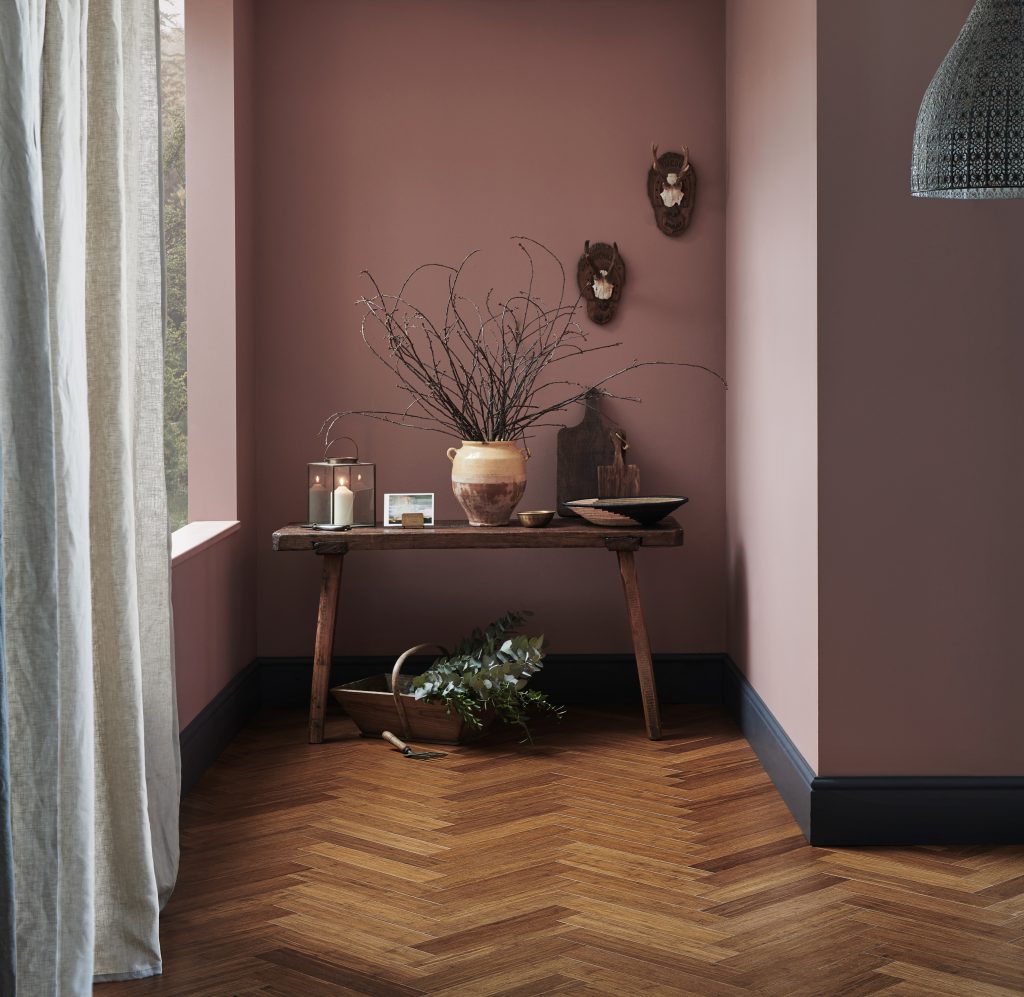
Floors are a big surface area in your home and what you choose can have a dramatic effect on the environment. Luckily there are plenty of eco-friendly flooring options available nowadays.Traditional wood flooring is not usually considered eco-friendly because of deforestation but if you choose reclaimed or salvaged wood from trees that were chopped down a long time ago you will be choosing a sustainable option. Look in reclamation yards like Frome or Wells Reclamation.
Cork, harvested from the bark of the cork tree, is sustainable because the trees are not cut down and will grow back, making it a wonderfully renewable flooring product. Bamboo flooring is made from a grass that grows to maturity in three to five years which makes it much more sustainable than wood. Polished concrete is getting more and more popular because it’s sustainable and can be polished and coloured in many different ways. Rubber flooring made from recycling tyres is one of my personal favourites for office spaces. Fun and funky!
If you are carpeting your house, look for carpets made of wool, which is a natural resource. Other natural materials used to make carpets or rugs are sisal, jute and cotton.
Paint
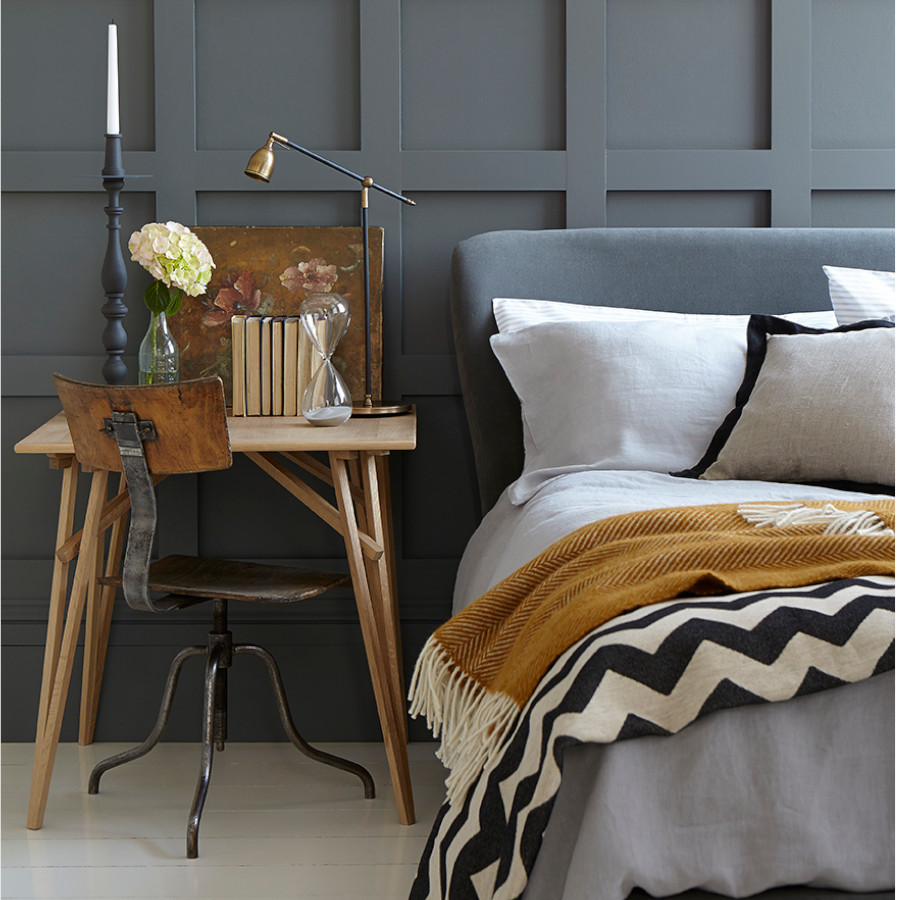
If you’re thinking about giving your walls a fresh new look, make sure you consider using an environmentally friendly paint brand that uses natural formulas and recycled packaging.
Little Greene’s paint is water based and carries the industry’s lowest eco-rating. The paint tins are made using 50% recycled steel and can be recycled again once you’re finished with them.
Cool new paint brand, Lick, is a champion of sustainable initiatives. The brand has partnered with ocean cleaning initiative 4ocean to help remove rubbish from seas, rivers and coastlines. So far in 2021 all Lick purchases have contributed to removing 11,000 kg of plastic from the sea and planting 5,112 trees.
Kitchens
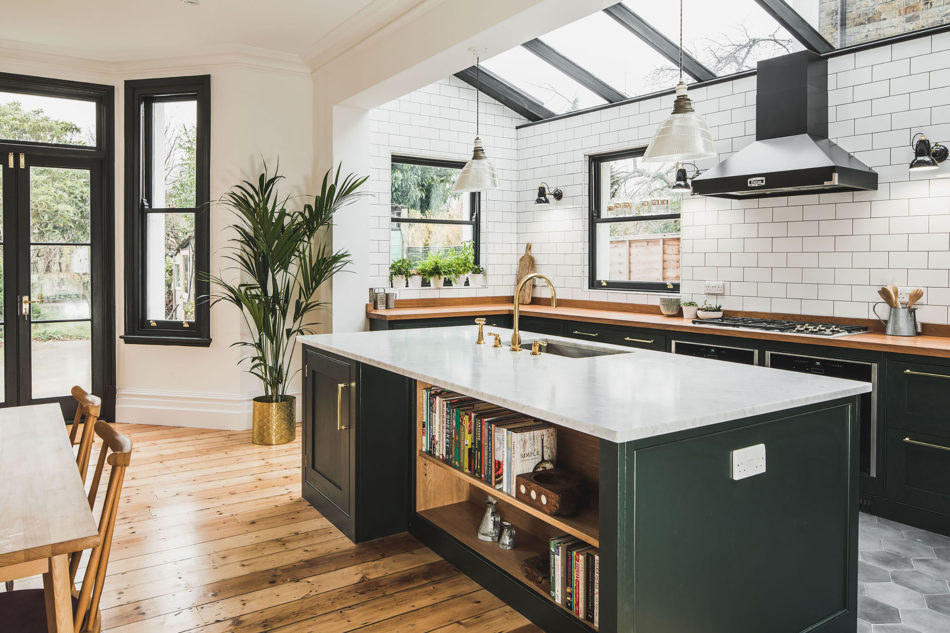
Make sure you choose a kitchen company with a mission to reduce the environmental impact of installing a new kitchen. Talk to your kitchen provider about where the wood for your cabinets is from or choose a specialist eco-friendly company. Based in Bristol, Sustainable Kitchens recognise their responsibility to reduce the consumption of energy, water and raw materials, to minimise the loss of habitat and biodiversity, and to reduce waste and emissions. By manufacturing their wooden cabinets predominantly in-house, they can control over the environmental impact of their production.
Sustainable Kitchens only use timber and sheet materials which are deemed to be ethical and which carry certification from the Forest Stewardship Council (FSC) or the Program for the Endorsement of Forest Certification (PEFC) who promote sustainably managed forests worldwide. They also help to replant the UK’s native woodland to ensure planting and maintaining of trees with every kitchen they make.
Worktops
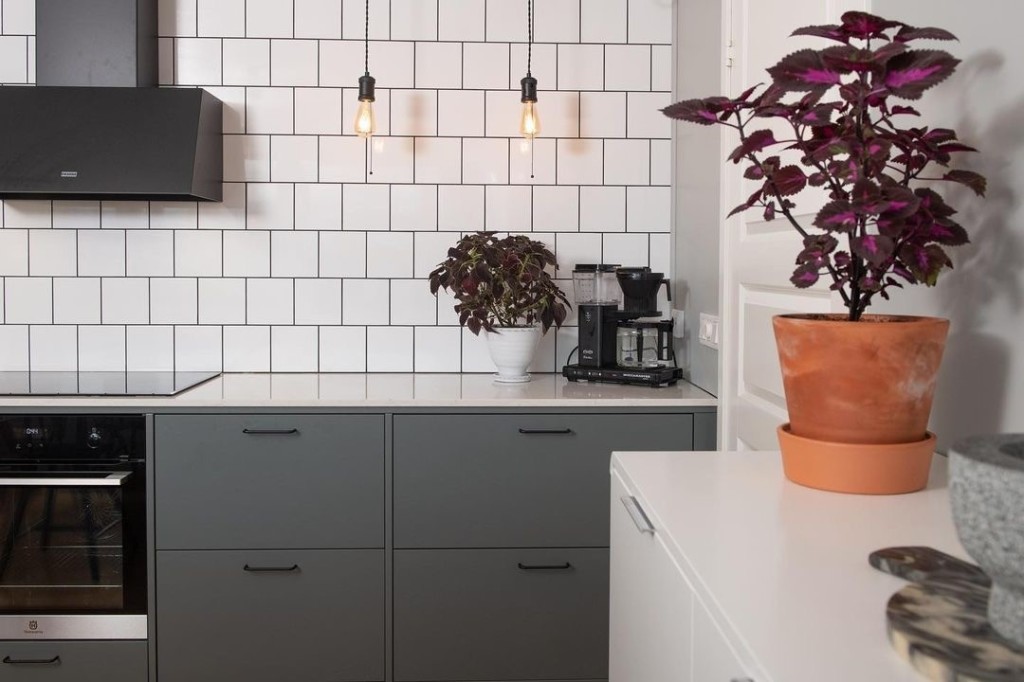
Apart from your kitchen cabinets, the most important part of your kitchen is the worktop. It’s very important to choose the most eco-friendly options you can find. Because worksurfaces are in contact with food, natural materials are better for your health. There are loads of different worktop options for different budgets, and some choices are more eco-friendly than others.
As well as looking fantastic and being super resilient, quartz is an environmentally friendly material. Quartz is a by-product of both the glass and mining industries and is made by using materials that would have otherwise ended up in a landfill. Quartz is good choice if you want the look of granite or marble, but without the issues around mining and child labour. Look for a quartz manufacturer like Caeserstone or Silestone who certify their quartz products. Local worktop suppliers all stock these popular brands.
Bathroom
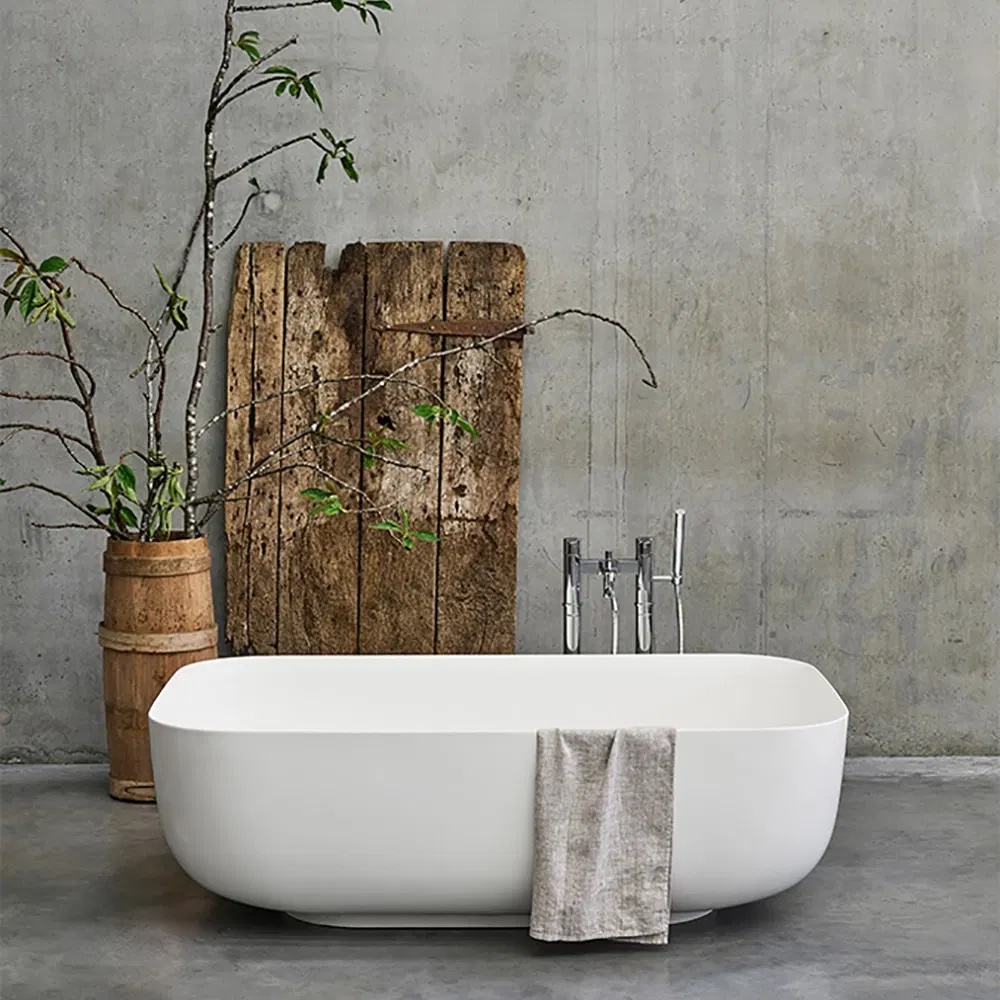
When planning a new bathroom, there are a few options available that are kinder to the planet.
A natural stone bath or basin is not only stunning but made to last. Stone baths are incredibly durable and will keep bath water warmer for longer. Stone bath designs offer everything from sleek, ultra-modern simplicity to more luxurious, classical freestanding bathtubs.
Steel is another great eco-friendly alternative to the traditional acrylic bath. It is a natural material so it is fully recyclable. It is also excellent at retaining heat.
When you do want a long soak in a bath, why not reuse your bath water for watering the garden? If you want to use less water, save baths as a special treat and opt for a shower on a day to day basis.
Make sure you install a dual flush toilet. Toilet flushing accounts for a huge amount of water used in the home and dual flush models use as little as 20% compared with older toilets.
Next week I’ll look at the key accessories – furniture, lighting, rugs and fabrics.



